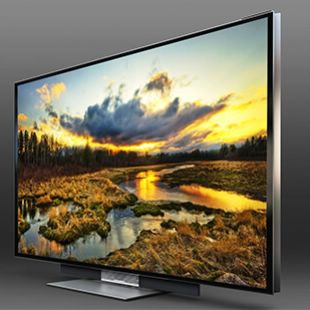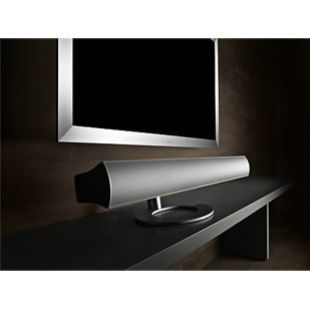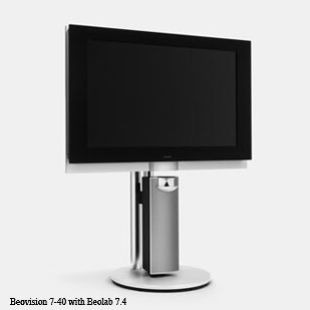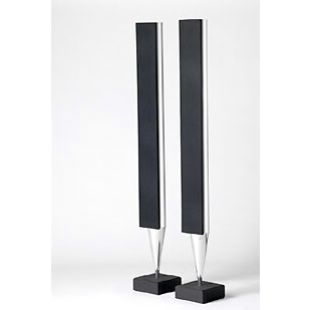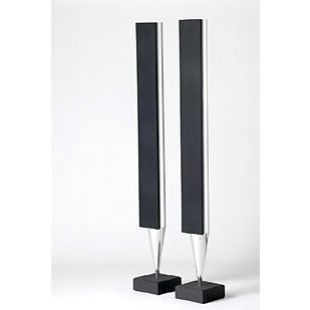BeoSound 4
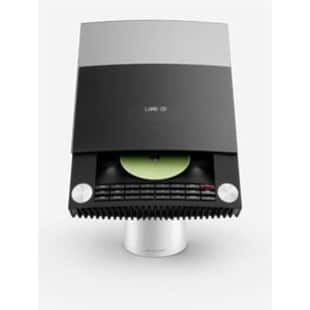
BeoSound 4 is a new audio product offering a complete audio experience. It has a CD player, FM / DAB radio and built-in SD memory card reader / writer. The DAB module will be included as standard for the UK and Irish markets is actually a factory-fitted option for any other markets. The unit is a full Audio Master (N.Music and N.Radio compatible) and can therefore be used to distribute sound through users’ BeoLink systems.
The new feature introduced on BeoSound 4 is the SD memory card reader / writer. This function replaces that traditionally provided by the audio cassette tape. The user can copy music from a CD or the Radio directly onto the memory card which will be compressed at 128kbps. The card can then be used in other compatible products such as BeoSound 2 and BeoSound 3. As it is possible to copy music onto a memory card using only BeoSound 4, this now offers access to digital music to a much wider audience – even those who do not own a computer. However, music can also be copied from a computer directly onto the memory card, be removed and then played back on BeoSound 4.
Placement
BeoSound 4 can be placed on a table or shelf as it is a free-standing product. Alternatively it is possible to mount it on a Floor Stand or on a Wall Bracket.
Mounting Options
From launch, BeoSound 4 could be wall mounted or positioned on a floor stand. The floor stand featured a turned stainless steel column which could not hide the connection cables. This solution was not a popular choice.
BeoSound 4 – the new compact audio system, with a touch of magic
Bang & Olufsen continues to surprise and delight music lovers with the new BeoSound 4, a compact audio system that exploits digital music storage and portability while offering the quality performance and usability expected from a traditional Bang & Olufsen audio system. BeoSound 4 will be available from November/December 2005.
BeoSound 4 is an audio system with built-in CD player, FM radio, and SD (Secure Digital) card slot. DAB radio is also available as an option, factory fitted. It is possible to record from the radio or CD to the SD card and play back the recording on BeoSound 4, or on another portable or stationary system.
Use and place anywhere at home
Bang & Olufsen’s well-known BeoLink system ensures the total integration of all entertainment at home, and BeoSound 4 offers the additional advantage of being able to send music played back from the SD card to loudspeakers throughout the house. The SD card increases flexibility in other ways as well, allowing the user to listen to recorded music in the garden with the new BeoSound 3 portable audio system or away from home on the BeoSound 2 digital music player.
“BeoSound 4 represents a new way of living with recorded digital audio entertainment, and yet the simplicity of the system and ease of use will have that reassuring feel of familiarity for the user,” says Michael Jensen, Product Manager, Bang & Olufsen. “BeoSound 4 has that touch of magic that shows its pedigree, and at the same time offers the integration with digital music formats that is increasingly important for how we listen to music.”
BeoSound 4 can be placed almost anywhere on its floor, table or wall stand. Angled for convenient operation, the glass door half-opens at the wave of a hand, and the operation panel with SD card slot is presented to the user. Press ‘Load’, and the glass cover rises further for the CD loader. Connect BeoSound 4 to any BeoLab loudspeakers, and in particular with the new and equally compact and refined BeoLab 4 loudspeakers.
Big impact expected
With a price that lies under what is usually expected of a Bang & Olufsen product, Bang & Olufsen expects that BeoSound 4 will capture a lot of interest from first-time buyers in the market. The digital portability offered by the SD card built into BeoSound 4 is consistent with Bang & Olufsen’s strategy to ensure that wherever the company’s customers may be, they can have their entertainment choices with them.
“With BeoSound 4, we have succeeded in building an audio system that lives up to the very high standards expected from Bang & Olufsen, from the idea behind the concept and design to the choice of materials and craftsmanship – and not least the ease of use and performance,” concludes Michael Jensen, Product Manager, Bang & Olufsen.
Press Release: November 2005


